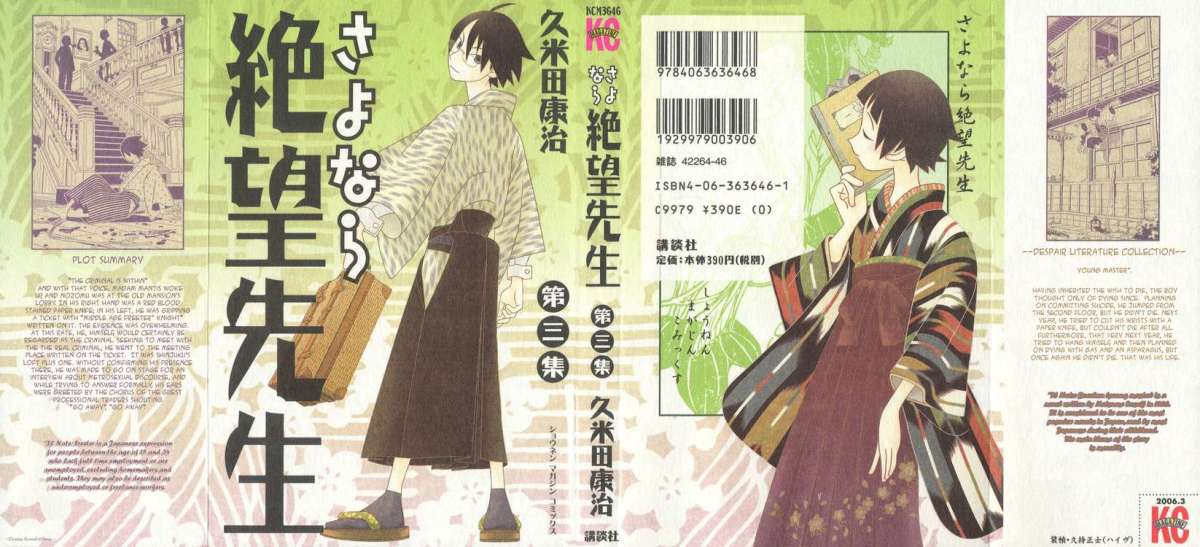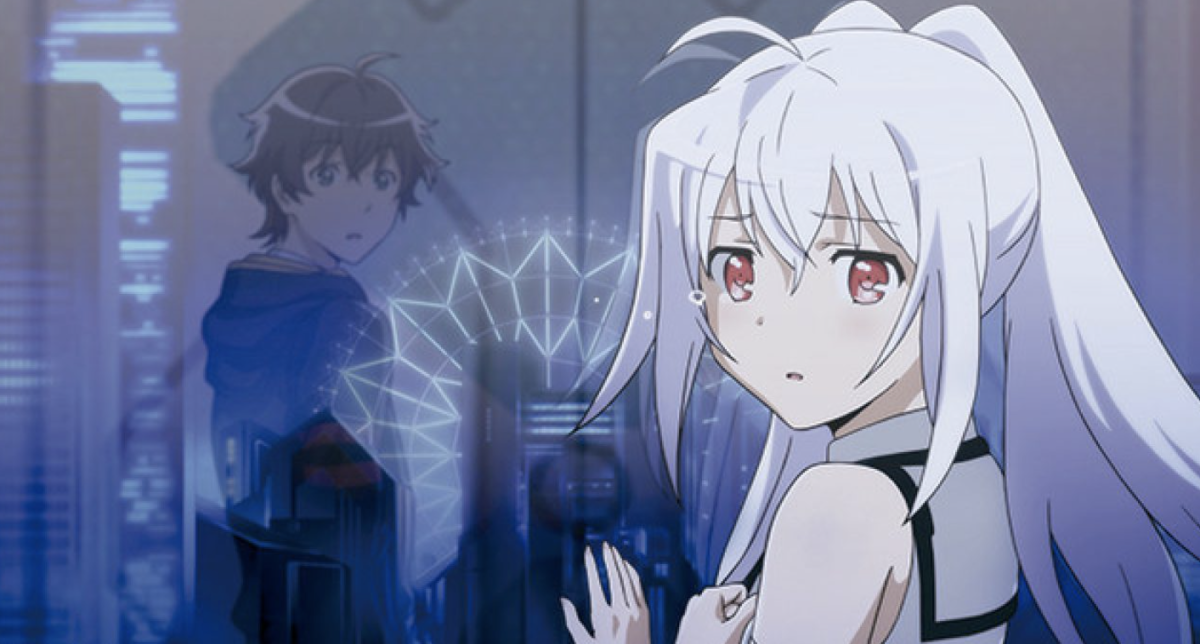Akame ga Kill! Anime Review
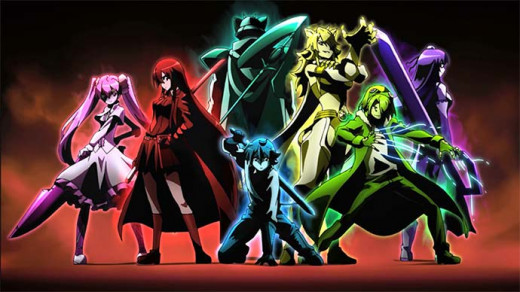
Akame ga Kill! is a 24-episode anime series aired in 2014 that was animated by studio White Fox, who's known mostly for their work on the Steins;Gate and Katanagatari anime. Akame ga Kill! is based on a manga series written by Takahiro, a person apparently known by only one name (I have no idea if this a nickname or anything, but that's the most likely case). The manga, which began printing in 2010, has yet to be concluded. This fact of the manga being unfinished will be an important detail later on, as the anime actually has an ending--and if you have any experience with anime-original endings, such as Fullmetal Alchemist and Soul Eater, you probably have some idea as to where the ending for Akame is going.
Characters
For some unexplained reason, most of the characters are known by only one name. Maybe this is the show trying to follow the idea of it being set in some kind of primitive era, since last names did not exist in the real world until sometime in the 13th century. However, this reasoning is up for debate since the amount of magic and technology in Akame ga Kill! contradict the idea of the world it's set in being primitive.
Tatsumi is the main protagonist. It's rather difficult to pin down exactly what kind of personality this character has, and this is possibly because he doesn't have a definitive personality. Sure, one could make a decent argument for Tatsumi being extroverted, gullible, determined, or something else, but all these traits are rather shallow and have little to do with the way that someone interacts with their own mind or with the people around them. Therefore, the small characterizations that Tatsumi receives don't do much in the way of making him distinguished or definitive, which are two things that help in making characters feel real.
This phenomena of a protagonist having no personality is a method used mainly to allow basically anyone to relate to the protagonist. I think that this idea in itself is fine, but I'd argue "self-insert" characters are much more suited for interactive media, such as video games and, to an extent, visual novels. This is because in interactive media, the player has control of the protagonist to varying degrees, and as such it would make sense to make the player feel as if they are the protagonist. Spectator media, on the other hand, can put us within intimate bounds of the characters it portrays, but rarely is it useful for the audience to feel as if they are the protagonist of a movie or tv show. The only practical purpose of a self-insert protagonist in spectator media is to appeal to as many people as possible without challenging them because people often have a hard time relating to others that aren't similar to themselves.
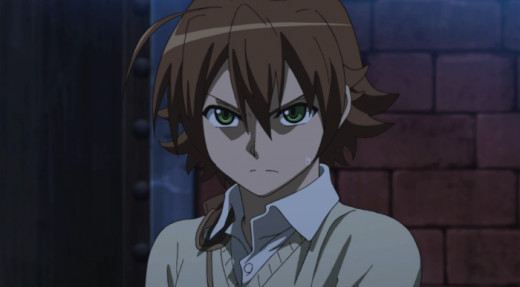
And that is exactly why Tatsumi is a poorly characterized protagonist, because he is bland and adds very little character to the show. In a way, this could be saying that the self-insert protagonist in spectator media can backfire in its attempts to aid audience relation, as a character with no identity performing an action can never be as lively as a character with some identity doing the exact same thing.
Akame is the titular character, and the fact that she is so is misleading. Usually, if a character's name is in the title of their respective release, it means that they play a major role in the story. For Akame, this is untrue, as she contributes very little to the actual story except for at the end and the beginning. I'm guessing that in the manga she plays a much more pinnacle role and that's why the title has her name in it, but in the anime her level of presence is comparable to how trees can be immensely overshadowed by an adjacent mountain.
Anyway, Akame actually has some semblance of a personality. She appears extremely distant and cold, but has a complex and delicate emotional structure beneath her normal appearance. Unfortunately, her character barely gets any focus so all of her potential is utterly wasted. It was quite annoying for the show to spend barely any time on the only character I found to be the slightest bit interesting.
All of the protagonists are part of a group called Night Raid. This group consists of Tatsumi, Akame, and a large roster of people that each come and go haphazardly. All of the characters other than Tatsumi and Akame are mostly one-note, but often suddenly change to be more than that whenever a perilous situation presents itself. There's little to say about the individual characters of Night Raid, because none of their personalities are that relevant and the majority of their contribution to the story is based wholly on the situations they're put in rather than who they are as a person. For example, Lubbock is a perverted man with green hair that uses string as a weapon. Pretty much the only other things I could say about this character would either be pertaining to his backstory or specific things that happen to him.
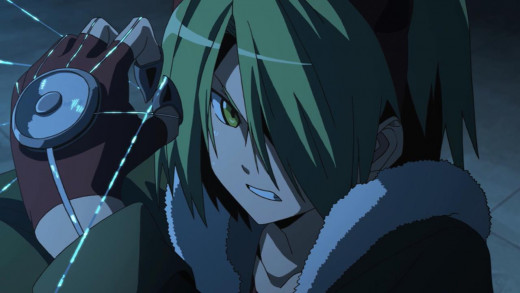
The main antagonistic group in Akame ga Kill! is known as the Jaegers. They work for the empire which the Night Raid rebels against because Night Raid doesn't favor the unjust and treacherous governing methods of the Empire.
Esdeath is the leader of the Jaegers. She's a ruthless, unstoppable killing machine that is only ever quelled by the presence of Tatsumi. Her undying attraction to the protagonist makes a reasonable amount of sense, mainly because her chaotic endeavors complement Tatsumi's cathartic but reasonably controlled attitude. But there's one thing that really confuses me about Esdeath's character--the fact that she is the most popular character in the show. I have no idea why the show's fan base would prefer a virtually emotionless killer over all of the other female characters who are comparably level-headed. Maybe they like her so much simply because she likes the protagonist and see the two of them as a "one true pairing" of the sorts, even though there was basically no chance that Tatsumi would ever reciprocate her feelings. I, for one, find Esdeath's character to be completely disgusting, and if that was what the writers were aiming for, then I guess they succeeded.
The rest of the Jaegers are mostly three-dimensional characters who feel like two-dimensional characters most of the time, ("2.5 dimensional character" is a fitting title for them) sort of like the characters of Night Raid. The only major difference between these two groups of characters is that the Jaegers have an added tendency of "blind evil" that Night Raid lacks. I don't know where this tendency of theirs was supposed to come from, or if it does anything other than make the audience favor Night Raid, but if the writers were going for a balanced conflict between two factions then it definitely failed because one is obviously made to be favored over the other. Of course the show spends a considerable amount of time trying to get the audience to relate to the Jaegers and the empire in general, but it's hard to take this attempt seriously when so much time is spent painting the Empire's characters with temperaments comparable to the unfathomable and silly depiction of "evil" that I'm sure many of us became familiar with while watching children's films at an early age.
Story
Probably the largest appeal of this show is its trademark gratuitous action scenes. If this were all someone were looking for, then sure enough, they would be satisfied with what Akame ga Kill! has to offer. The actions scenes themselves feel very fluid, somewhat strategic, and have a good amount of tensity to them, because none of the characters have an unreasonable amount of plot armor. Still, the visceral action loses its effect by about the tenth time it appears, so they could have definitely toned it down if they wanted to be taken more seriously and not appear to be using gore for shock value alone.
However, the action is often broodingly long and involves many ridiculous cliches including the "I'm going to stand here and relay a massive amount of expository dialogue even though we're currently in a fight to the death," and the "I'm going to cockily make remarks about my actions or the situation of my opponent because I've somehow been allowed time to do that." Another thing is that the flow of these fight sequences feels completely contrived. The fights just drag on and on, seemingly with no progress, until someone pulls out their "super special move" or something and then instantly defeats their opponent. This makes the fights very predictable, and, at times, dull, almost as if the characters are wasting time simply in service of making things last longer.
I fail to see why Night Raid calls themselves assassins anyway. Only one of their members could be considered an assassin by the standard definition, as the rest of them are just straight-up fighters. One scene in particular had them barging into a building and killing a mass of people. There is nothing stealthy about this incident, and many of their other actions as well. Them calling themselves assassins is very misleading, maybe they should have stuck with just calling themselves rebels. Also, their ability to just prance around the Empire's city areas without being caught in the act is unbelievable, like the authorities either don't exist or just happen to not be around the same areas as the protagonists because they're lazy or dumb.
Blah blah blah blah blah
Akame ga Kill! has two main moods that it switches between periodically. The first of these moods is that of the serious, dark, violent, or anything along those lines. The show encompasses this mood for the majority of its fight sequences and similar events. The other main mood is that of a comedic, silly, or ridiculous demeanor. This mood is used whenever something not important is happening, such as characters joking around or performing some very lighthearted anime cliché. The fact that both of these moods coexist in the same show is not necessarily a bad thing, but the way that they're put together is very problematic. This is because the show just kind of randomly jumps back and forth between the two, often inappropriately or at the completely wrong time. Sometimes characters will be mourning or brutally killing someone one minute, all in a very serious light, and then they'll be joking around within a few minutes as if they have short term memory loss.
I mean, the show is just going on about all these thematic concepts, with people whining about death in one scene, and then within a short amount of time they act as if they no longer care. Did the writers want us to take this show seriously or not? Doing both is possible to an extent but there still needs to be a fine line between the two, (i.e. the Monogatari series) you can't just have your tone be all over the place without a great amount of focus on either.
For the most part the show is paced very quickly, probably too quickly in parts. In the first two episodes, Tatsumi is rapidly convinced by Night Raid that the empire is evil and he must rebel against them. Okay, that makes sense and all, but I find it ridiculously hard to believe that someone would be convinced that an entire governing body is evil in such a short amount of time, with no contemplative behavior of any kind exhibited. The writers could have made it so he got convinced over time and gradually changed his mind, but no, they forewent doing that because moving the plot along in order to get to the action was apparently more important than making the story believable. Also, they have Tatsumi's two friends whom we barely know die in the very first episode so that the audience better empathizes with Tatsumi, but that doesn't matter anyway because it's hard to feel sad about characters dying when we've only known them for about 10 minutes.
At certain points in the show, characters' back stories are suddenly shown. It gets obvious pretty quick that nearly every time this happens it means that the character having their back story shown is going to die soon. This aspect alone is already annoyingly predictable, but it also goes to show how lazily written the script is. If the writers have to pull a reason out of nowhere for us to care about a character just before they die, it either means that they are just thinking of ideas with no thought as to what anything is leading up to, or that they forgot that it takes time to get the audience to feel anything for the characters. If a writer poorly characterizes someone except for during the final moment that they're alive, then they're ignoring the importance of characterization over time and should not expect much of the audience to have a connection with the character involved.
Then there's these parts where the show just turns into a cheesy battle shounen, utilizing conventional battle shounen tropes such as taking an extremely long time for a fight to close out, and characters pulling ridiculous power-ups out of nowhere. One of the bigger examples of this is episode eight, wherein the entire episode is a single fight, and a guy transforms into a lesser version of the Hulk at the very end. This is the part where I started remembering why I generally dislike battle shounen shows. I mean, this is the kind of stuff that I watched on Saturday mornings as a child and then found to be extremely boring by about the time I was 14. But I guess this is all due to me finding the act of "turning your brain off" to be impossible, meaning that flat absurdity is far more discouraging to me than it is encouraging. Episode eight was so excruciatingly painful for me to watch to the point that I nearly decided to drop the show, because I was so tired of the cliches and the characters. Obviously I persevered. What puzzles me even further about the setup of episodes 7 and 8 is that we're never shown Tatsumi traveling to the location that it takes place in, he just suddenly appears there. It feels so stocky and rushed for them to not show us not even a single frame of him traveling there.
Of course, there were a few things that I liked about the show. For instance, I found the parts where the characters lamented their situations or explained what "strength" was to them to be somewhat enlightening, but this doesn't help the fact that most of these instances are pulled off poorly or with little emphasis. If the show truly cared about making us invest ourselves in the characters and their ideas, then it wouldn't spend the majority of its time focusing on silly action and ridiculous comedic scenes. Almost none of the characters feel like they contributed anything meaningful by the time their end came, and most of their development and details are glazed over.
One part of the show in particular got me interested in what it could transpire. I'm talking about the scene in which Tatsumi refuses to accept Esdeath's affection, to which Esdeath responds by committing herself to changing Tatsumi as a person. Perhaps this could have been leading to a dramatic change in character from either of these people, but the scene is ultimately tantalizing and is never expounded upon.
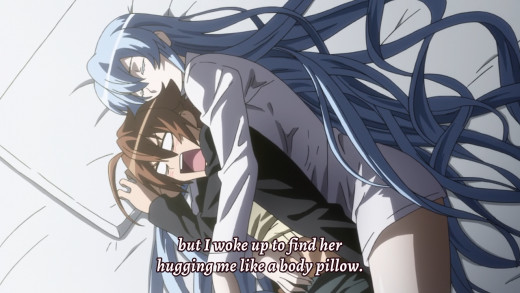
The ending of Akame ga Kill! is probably one of the most obtuse endings of recent anime. Not only is the setup and characterization insane as always, but how it plays out is so jarring and unbelievable that I don't know how it even came to be in the final product. You should probably stop reading right now if you haven't seen all of the show, because spoilers are ahead.
In episode 23, Tatsumi defeats the emperor's giant robot thing. After it's defeated, the mechanism threatens to fall down and kill all the innocents who are standing below. Tatsumi then tries to stop the gigantic object from killing people. He somewhat succeeds, but dies. I suppose he had the strength to stop it because of his armor, and "over-exerting" himself with the armor is supposedly what killed him, but the entire situation feels contrived as if they were trying to think of some cheap way to kill Tatsumi here without making his death feel entirely believable (well at least from how I perceived it).
The fact of the protagonist suddenly dying on the penultimate episode is confounding. I thought that there was going to be some kind of growth from his character (well there was growth shown, but not a whole lot) that we would get to see in the end. He just kind of dies and then misses out on all of that potential he had. Even the other characters seem to care very little about him dying. He dies and then most everyone else just carries on, seemingly as if nothing happened. His death was not mourned that much and is gone over by the other characters as not much more than "oh, he's dead." This is very odd because it feels like the show is indicating that all of his actions didn't matter.
In the last episode, even more confusing things happen. Why was the emperor executed? He wasn't really doing much wrong, (except for his sudden change of character in episode 23) and what does executing him do anyway? It's not like there was any chance of him coming back to power. Why didn't Leone seek medical attention? Is she an idiot? If the explanation of this is that "she didn't want to live anymore," then at least allude to that in some way, we can't just assume that that was the case. The outcomes of this show are so callous that it feels as if it's betraying all it was supposedly about before. It simply ends with the rebels winning, and that's mostly what there is to get out of it. A lot of this can be chalked up to the fact of this being an anime-original ending that strays away from the source material.
Animation & Sound
The animation of Akame ga Kill! is pretty good. Everything looks acceptably smooth when it needs to be, and there isn't a whole lot of errors or places where the budget appears to dip. It's somewhat unusual that a show this violent aired completely uncensored on the internet. There's been multiple issues with anime that have similar amounts of violence being censored, and it isn't clear to me why those anime were censored and Akame wasn't, since they were all made in Japan. It's nice that censorship wasn't a problem for this show, since censorship always either distracts or takes away from the intended experience. The high use of bright colors for the show is contradictory of the gritty and "dark" feeling of the show as a whole. They probably should have made things look a lot darker in places if they wanted to go along with the "gritty" setting more appropriately.
There isn't anything special about the music. It always fits the scene and changes when it needs to, and the opening song goes along with the essence of the show quite well. The problem is that nothing sticks out or is that memorable, making things somewhat drab and uninteresting.
Conclusion
If you're looking for anything more than stupid fun in Akame ga Kill!, then you're looking in the wrong place. It has countless problems, with most of them being in hugely important areas. It doesn't know how to manage variance in tone, making it seem like the show has a dual personality at times. The characters don't have much to them, and the protagonist is mostly lacking in personality. The show doesn't pace its events well, always trying to make the viewer feel sad about a character dying right before they die, which is rarely a good idea. Its thematic ideas aren't accounted for very well, there's a few plot inconsistencies, and the ending doesn't fit with the rest of the show. There are many action anime that fare much better than this one, such as Hitsugi no Chaika and both iterations of Fullmetal Alchemist, so I'd suggest either of those over Akame any day. Akame ga Kill! is atrocious--it fails at nearly everything and provides little in the way of making up for its mistakes.

